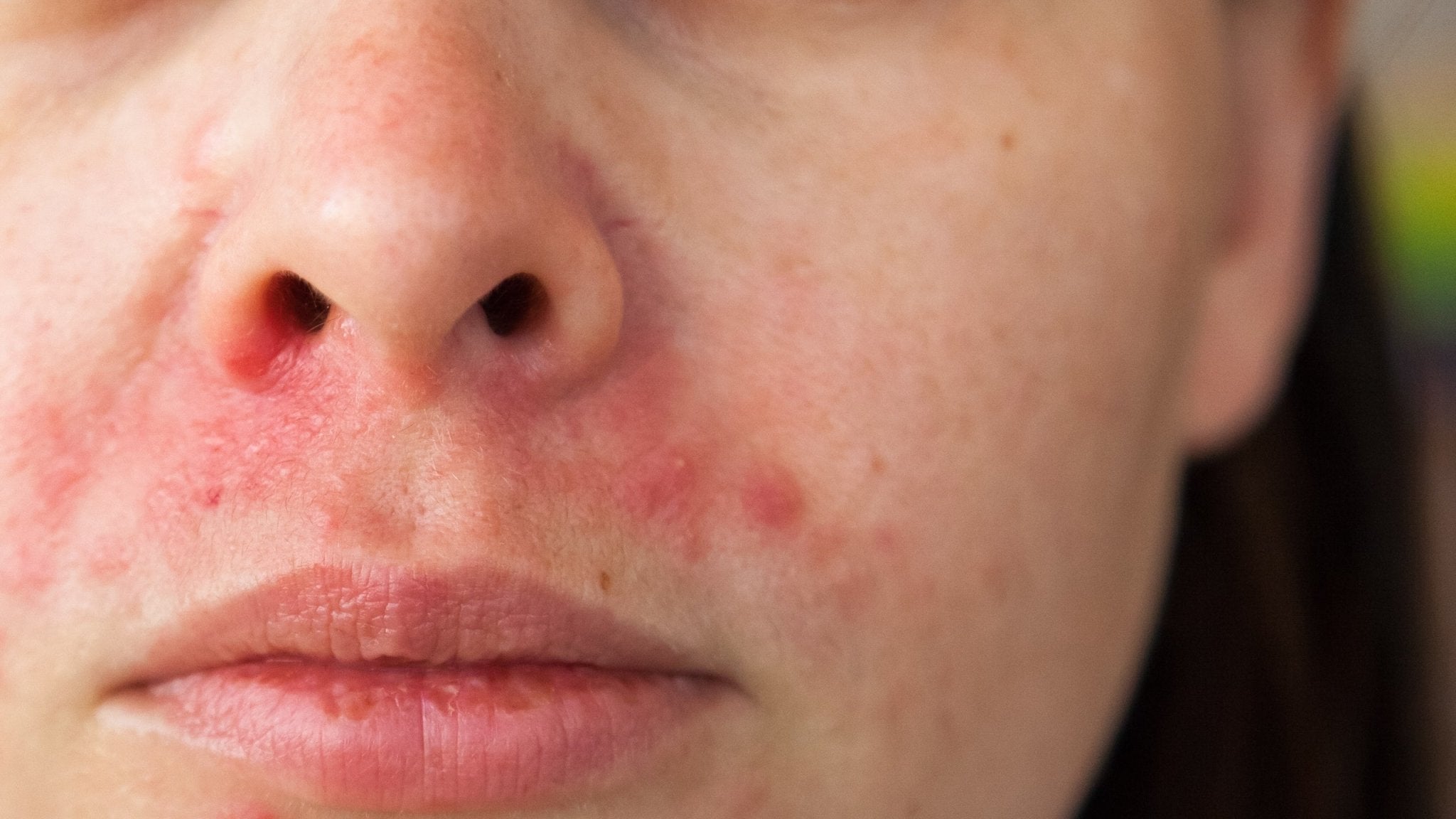If you’ve been struggling with a dry and flaky rash around your mouth, you could be dealing with perioral dermatitis.
Meaning “inflammation of the skin around the mouth,” perioral dermatitis is characterized by scaly, inflamed skin with swollen bumps.
Women aged 25-45 who use topical steroids are most at risk of developing perioral dermatitis, but children and men can develop it as well. Perioral dermatitis can last for weeks, months, or even years. However, there are treatment options to help you soothe symptoms and reduce the rash.
Perioral Dermatitis Symptoms
Perioral dermatitis causes a visible rash around your mouth. In lighter skin, perioral dermatitis appears red. In darker skin, perioral dermatitis often appears darker than your underlying skin tone. This rash persists for weeks, if not longer, and is typically bumpy, dry, scaly, or flaky. It can cause an itching or burning sensation.
While perioral dermatitis usually appears around the mouth, it can spread around your eyes and nose. Rarely, this rash can appear around the genitals. If your rash appears in this area or around your eyes or nose, your doctor may refer to it as periorificial (around an opening) dermatitis.
Some people develop pink eye when they have perioral dermatitis. If this is the case, your healthcare provider may refer you to an ophthalmologist.
Perioral dermatitis is often mistaken for acne or types of eczema like atopic dermatitis, contact dermatitis, or seborrheic dermatitis. A doctor may only need to do a visual examination of your skin to diagnose your condition, but occasionally, a skin biopsy to make the distinction is necessary.
Perioral Dermatitis Causes
While the cause of perioral dermatitis remains unknown, it can be triggered by the use of topical steroids.
Topical steroids are a type of steroid medication applied directly to the skin. Doctors commonly recommend topical steroids for eczema patients due to their anti-inflammatory and immunosuppressive properties. They can also clear up a mild case of perioral dermatitis temporarily. However, there is a well-known link between using topical steroids and developing perioral dermatitis. Long-term and/or high potency steroid use can also lead to topical steroid withdrawal, a little-understood syndrome.
Perioral Dermatitis Risk Factors
According to the Cleveland Clinic, additional risk factors for developing perioral dermatitis may include:
- Using an inhaler (inhaled prescription steroid spray)
- Using moisturizers and heavy face creams
- Brushing with toothpaste that contains f luoride
- Chewing gum
- Dental fillings
- Hormonal changes (or oral contraceptives)
- Skin barrier dysfunction
Does Perioral Dermatitis Go Away on Its Own?
Most cases of perioral dermatitis resolve at some point on their own, but it can take weeks, months, or even years before that happens. Left untreated, repeat cases of perioral dermatitis can turn into rosacea.
Perioral Dermatitis Treatment
There is no one-and-done cure for perioral dermatitis, but long-term remission is possible. With the right treatment, your symptoms and rash are likely to clear up much sooner. Treat your perioral dermatitis by:
Eliminating Triggers
To treat perioral dermatitis, first, stop using any products that could be triggering the condition. These could include:
Steroid Creams and Inhalers
Topical steroids and steroid inhalers can contribute to perioral dermatitis flares. Discuss your use of these medications with a healthcare provider, who can help you adjust your treatment plan if necessary, explore other potential therapies, and address your perioral dermatitis.
Facial Creams, Cosmetics, and Sunscreen
Take a break from your usual routine to let your skin breathe. One study conducted in Australia discovered that the application of foundation, moisturizer, and night cream resulted in a 13-fold increase in perioral dermatitis. The authors of this study suggest that layering these products could create a barrier on the skin that allows bacteria to grow, promoting a rash. Physical sunscreens, petroleum jelly and paraffin-based products are all linked to perioral dermatitis flares. Try switching to minimally formulated, fragrance-free products to avoid any potential irritants in your skincare routine.
Fluorinated Toothpaste and Chewing Gum
Fluoride as well as cinnamon and peppermint flavorings have been flagged as potential irritants for perioral dermatitis. Avoiding daily exposure to these ingredients may help reduce your rash. You can find toothpaste without fluoride in many health food stores.
Talking to Your Doctor About Medication Options
Once you have eliminated the potential causes, you can focus on treating the skin. There are both topical medications and oral medications your doctor may recommend to improve your perioral dermatitis symptoms quickly. Your doctor may suggest a topical antibiotic cream or gel, oral antibiotics, or other medications that are generally used for eczema or rosacea.
Balance Your Skin Microbiome with Gladskin Eczema Cream with Micreobalance®
Your skin is your largest organ, and it is also host to trillions of microorganisms. A healthy balance of good bacteria on the skin can help prevent flare-causing bacteria from overgrowing. Gladskin Eczema Cream with Micreobalance® restores bacterial balance to the skin microbiome. It’s clinically proven to reduce eczema symptoms, steroid-free, and safe to use daily around your face and mouth. Learn more.
